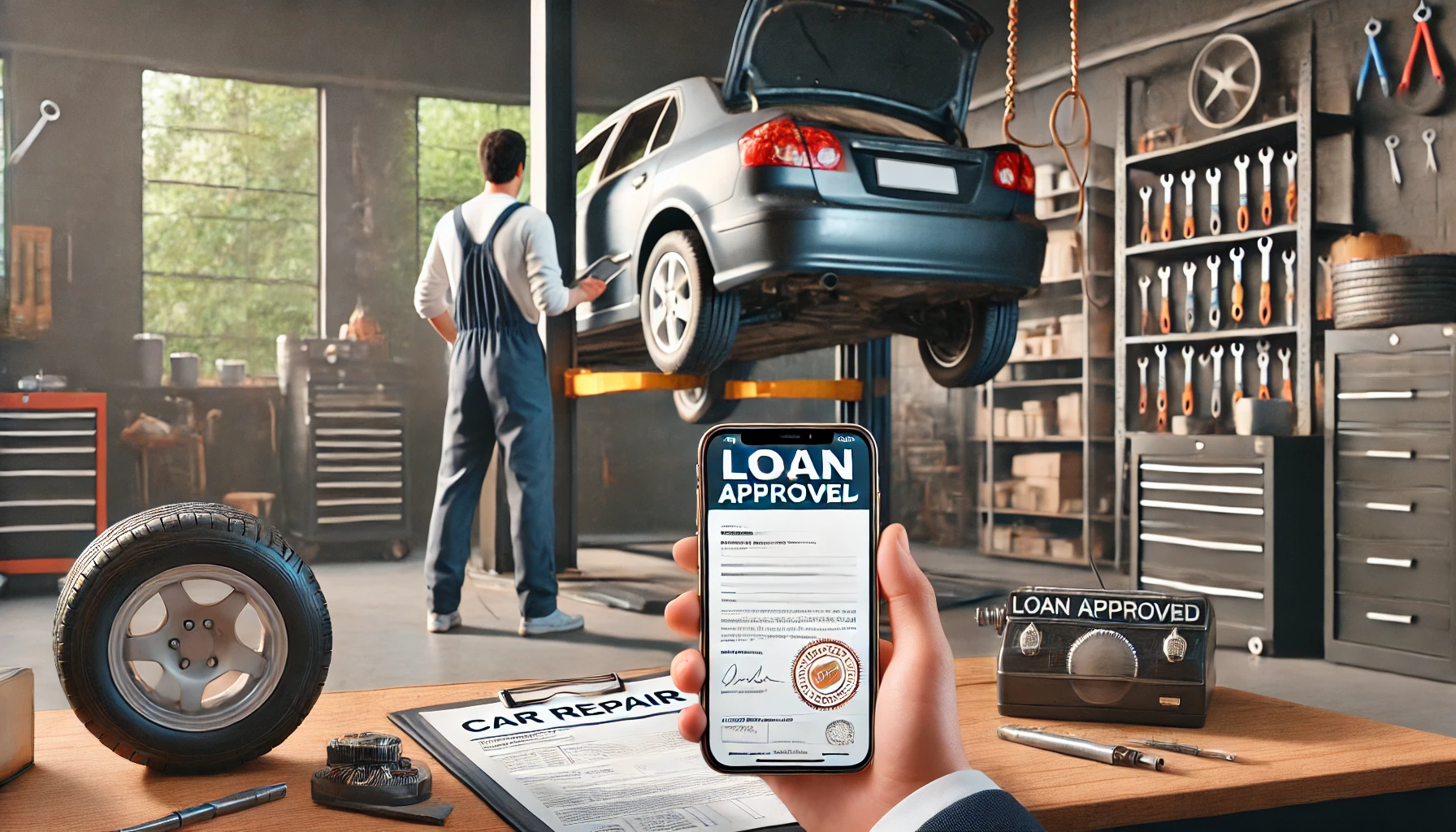How Can I Use a Personal Loan for Auto Repair Expenses

How Can I Use a Personal Loan for Auto Repair Expenses?
Unexpected car repairs can be a major financial burden, especially if you rely on your vehicle for daily commuting or work. If you don’t have enough savings to cover the cost, a personal loan can be a practical solution. Personal loans offer flexibility, allowing you to finance auto repairs without resorting to high-interest credit cards or draining your emergency fund.
In this article, we’ll explore how personal loans can help with auto repair expenses, the pros and cons, and what to consider before applying.
Why Use a Personal Loan for Auto Repairs?
Auto repairs can be costly, and many people don’t have enough savings to cover sudden expenses. A personal loan offers a way to pay for repairs upfront and repay the amount in manageable installments. Here are some key reasons why using a personal loan for car repairs may be a good option:
- Quick access to funds – Many lenders offer fast approval and funding, sometimes within 24 to 48 hours.
- Fixed interest rates – Unlike credit cards, personal loans often come with fixed interest rates, making it easier to budget.
- Predictable repayment terms – You’ll have a set monthly payment, which helps with financial planning.
- No collateral required – Most personal loans are unsecured, meaning you don’t need to use your car or any other asset as collateral.
How to Use a Personal Loan for Auto Repairs
1. Assess the Repair Costs
Before applying for a personal loan, get a detailed estimate from a trusted mechanic or auto repair shop. This helps you determine how much money you need to borrow.
2. Compare Loan Options
Different lenders offer varying interest rates, loan terms, and fees. Compare offers from banks, credit unions, and online lenders to find the best deal. Look for:
- Low interest rates
- Minimal fees (such as origination fees)
- Flexible repayment terms
3. Check Your Credit Score
Your credit score affects the interest rate and loan terms you qualify for. A higher credit score may get you lower interest rates, while a lower score might lead to higher costs.
4. Apply for the Loan
Once you choose a lender, complete the loan application process. You’ll need to provide personal details, proof of income, and possibly information about your car repairs.
5. Receive Funds and Pay for Repairs
After approval, the lender will deposit the funds into your bank account. You can then pay the auto repair shop directly and get your car fixed.
6. Repay the Loan on Time
Make timely payments to avoid late fees and potential damage to your credit score. Consider setting up automatic payments to stay on track.
Pros and Cons of Using a Personal Loan for Auto Repairs
Pros:
✅ Fast funding – Get money quickly to avoid delays in fixing your car.
✅ Fixed payments – Monthly payments are predictable, making budgeting easier.
✅ No collateral needed – You don’t risk losing your car if you can’t repay the loan.
✅ Lower interest than credit cards – Personal loans often have lower rates than credit cards.
Cons:
❌ Interest costs – Even with lower rates, you’ll pay interest over time.
❌ Potential fees – Some lenders charge origination fees or prepayment penalties.
❌ Credit impact – Taking on new debt can affect your credit score.
Alternatives to Personal Loans for Auto Repairs
If a personal loan isn’t the best option for you, consider these alternatives:
- Emergency savings – If you have savings, using them may save you from paying interest.
- Credit cards with 0% APR – Some credit cards offer interest-free financing for a limited time.
- Mechanic payment plans – Some repair shops offer in-house financing or installment plans.
- Auto repair loans – Specialized lenders provide loans specifically for car repairs.
Final Thoughts
Using a personal loan for auto repair expenses can be a smart way to handle unexpected costs, especially if you need your vehicle for daily activities. However, it’s essential to compare loan options, consider the costs, and ensure that repayment fits your budget.
Before applying, explore all your financing options to find the best solution for your situation. If you can secure a low-interest personal loan with favorable terms, it can be a convenient and effective way to get your car back on the road without financial stress.
Borrowing Tips for Bad Credit.





